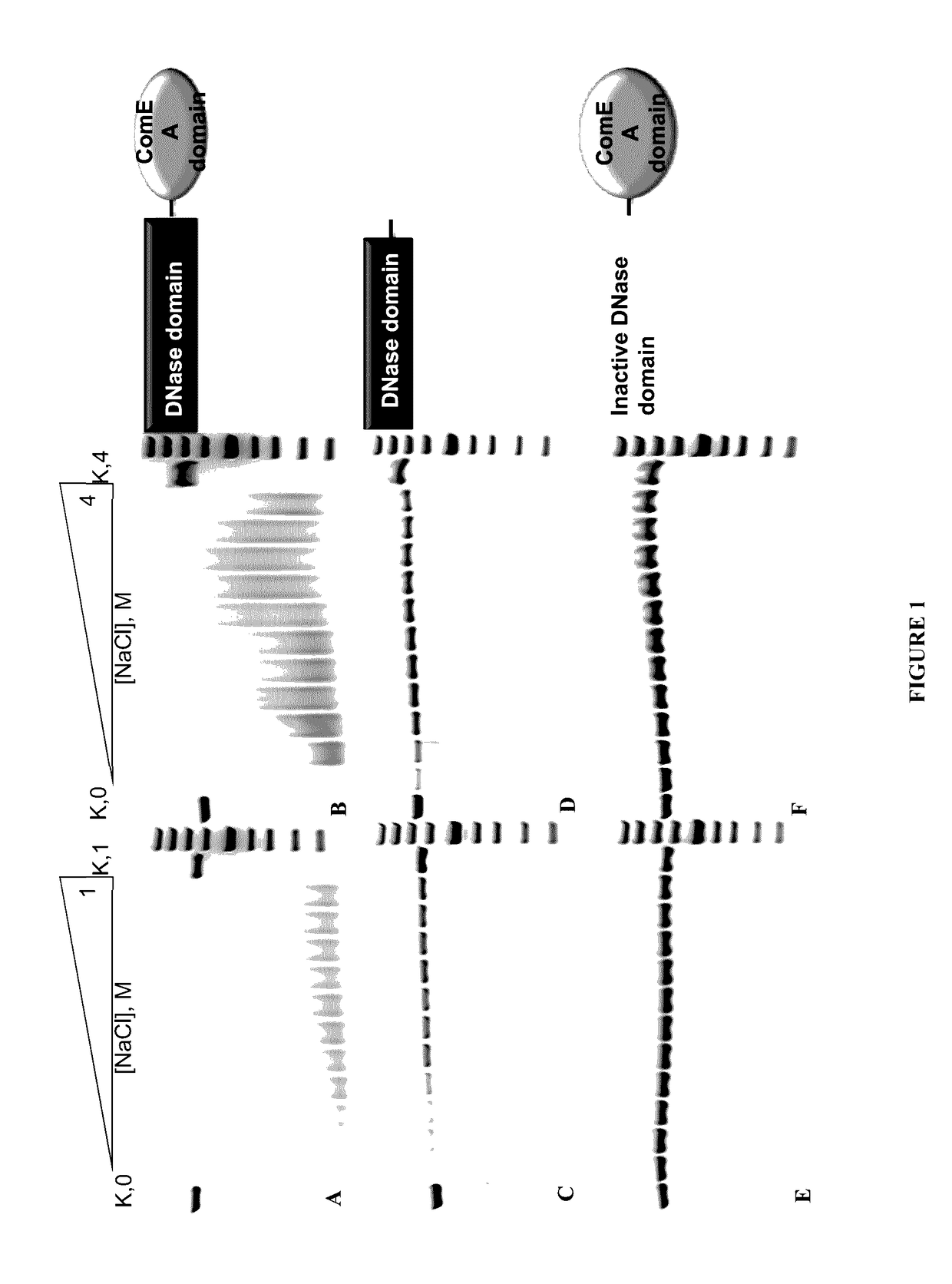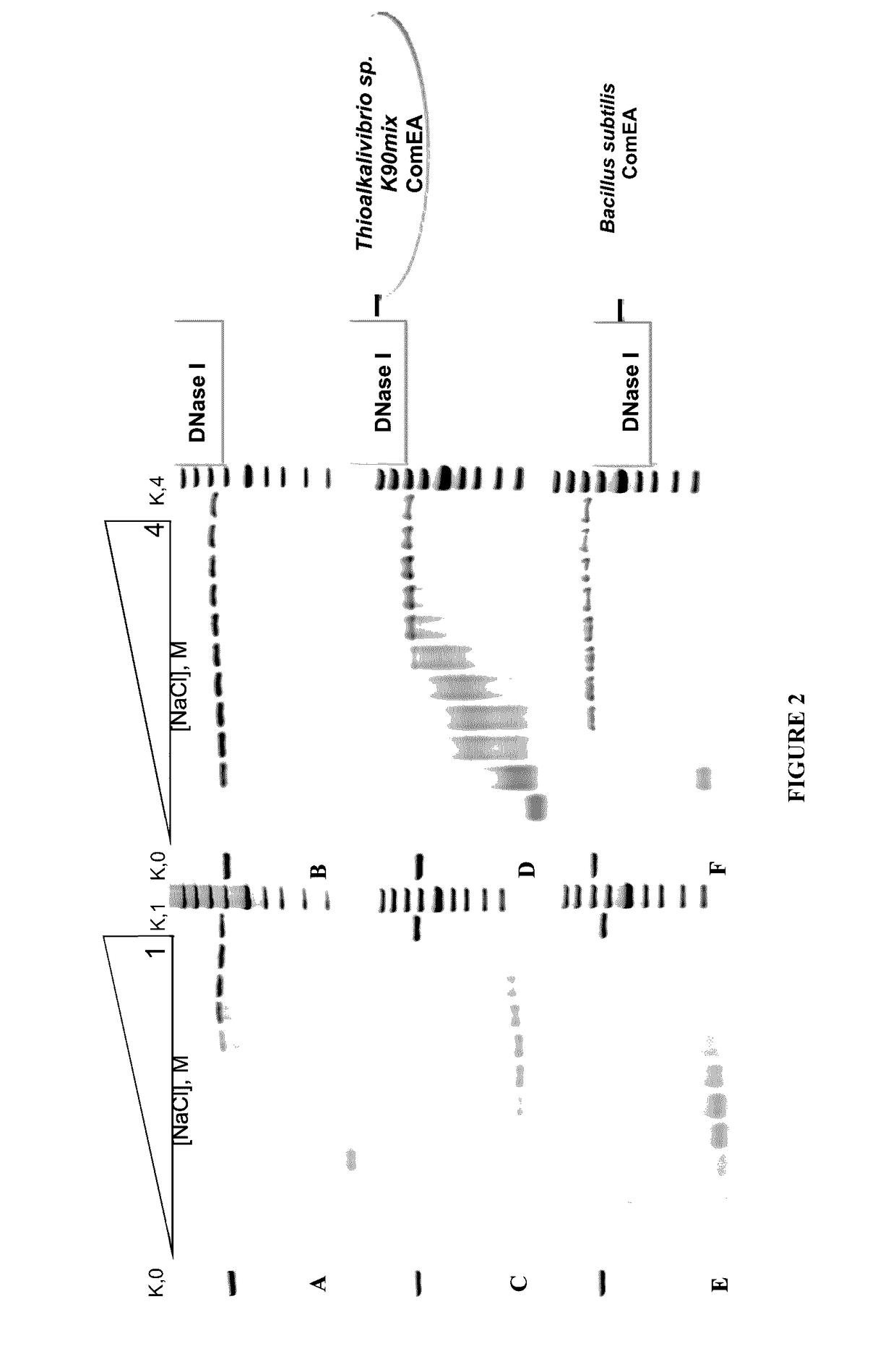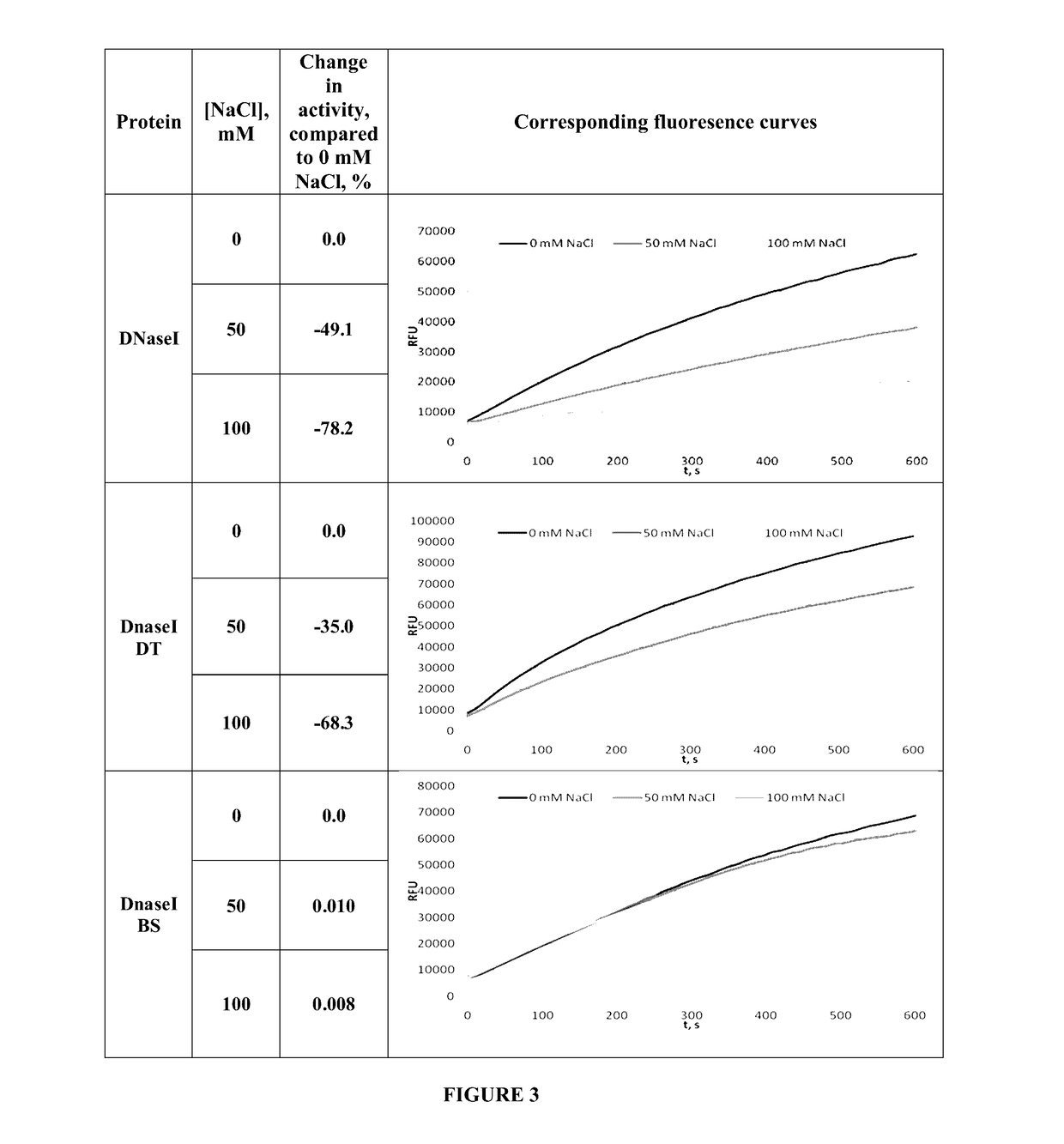Deoxyribonuclease Enzymes
a technology of deoxyribonuclease and enzyme, which is applied in the field of nonnaturally occurring compositions of halophylic dnases, can solve the problems of limiting the application of dnasei in molecular biology manipulation, low resistance to ionic strength, and inability to use dnasei to degrade residual genomic dna in crude cell lysates in rna sample preparation workflow, etc., to achieve particular
- Summary
- Abstract
- Description
- Claims
- Application Information
AI Technical Summary
Benefits of technology
Problems solved by technology
Method used
Image
Examples
example 1
[0056]Properties of the predicted protein of UniProt Accession No. D3SGB2 (putative DNase from Thioalkalivibrio sp. K90mix) were investigated by producing and analyzing recombinant version of this protein (designated DNaseTA) expressed in E. coli. Mutants of DNaseTA were made (DNAseTA AC and DNAse TA H134A) and tested.
Example 1.1 Cloning and Expression of DNase from Thioalkalivibrio sp. K90Mix
[0057]Gene sequence (without secretion signal) encoding putative DNase from Thioalkalivibrio sp. K90mix (accession D3SGB1) was optimized using DNA 2.0 package for expression in E. coli, synthesized and cloned into pLATE31 expression vector using aLICator™ LIC Cloning and Expression Kit 3 (Thermo Fisher Scientific). Coding nucleotide sequence is presented in SEQ ID NO: 3.
[0058]For protein expression E. coli ER2566 strain was transformed with pLATE51 vector carrying cloned gene for DNase DT. Bacteria were grown in LB broth supplemented with glucose (1%) and carbenicillin (100 μg / ml). Initially a ...
example 1.2
Construction of DNaseTA H134A and DNaseTA ΔC Deletion Mutants
[0060]Creating H134A mutant of DNaseTA two step megaprimer PCR was employed. Both PCR reactions were performed with 2× Phusion® High-Fidelity PCR Master Mix (Thermo Fisher Scientific). The first PCR was performed using primers, which sequences are given in SEQ ID NO: 5 and SEQ ID NO: 6 as a template DNaseTA plasmid DNA (cloned as described in Example 1.1) was used. The PCR product was gel-purified and used for the second PCR reaction. This PCR product was used in the second PCR reaction together with a primer, which sequence is given in SEQ ID NO: 7. As a template the plasmid of DNaseTA was used (see above). The resulting fragment was gel-purified and cloned to pLATE31 vector using aLICator™ LIC Cloning and Expression Kit 2 (Thermo Fisher Scientific). For cloning and plasmid purification Escherichia coli strain ER2267 was used. The coding sequence and amino acid sequence of DNaseTA inactive site mutant are given in SEQ ID ...
example 1.3
of Activity of DNaseTA and its Mutants DNAseTAAC and DNAseTAH134A
[0064]10 nM 16 bp DNA (2 nM were labeled with 33P at 5′) was used as a substrate. Reaction mixtures contained 0.66 nm of the enzyme or its mutants. DNA digestion was performed at 37° C. in 100 μl reaction buffer (10 mM Tris-HCl, pH7.5; 10 mM CaCl2; 10 mM MgCl2). 9 μl samples of reaction mixes were taken out at 1, 2, 4, 8, 16, 32, 64, 128, 192 minutes after start and mixed with 9 μl of 2×RNA loading dye (Thermo Fisher Scientific). These mixes were heated for 5′ at 95° C. and analyzed by denaturing PAGE. Halve times of substrate digestion were estimated in comparison with undigested substrate band (control) using densitometry analysis.
[0065]Results
[0066]Obtained recombinant enzyme was designated as DNaseTA and its ability to catalyze DNA degradation in high ionic strength (salt) conditions was evaluated. As it is seen in FIG. 1, DNaseTA remains active even at high ionic strength. Moreover, this DNase digests DNA at 4 M N...
PUM
| Property | Measurement | Unit |
|---|---|---|
| ionic strength | aaaaa | aaaaa |
| ionic strength | aaaaa | aaaaa |
| concentrations | aaaaa | aaaaa |
Abstract
Description
Claims
Application Information
 Login to View More
Login to View More - R&D
- Intellectual Property
- Life Sciences
- Materials
- Tech Scout
- Unparalleled Data Quality
- Higher Quality Content
- 60% Fewer Hallucinations
Browse by: Latest US Patents, China's latest patents, Technical Efficacy Thesaurus, Application Domain, Technology Topic, Popular Technical Reports.
© 2025 PatSnap. All rights reserved.Legal|Privacy policy|Modern Slavery Act Transparency Statement|Sitemap|About US| Contact US: help@patsnap.com



